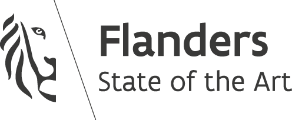Program – Bach, Concerto, suite, sonata & quintet
Content:
Instrumentation
traverso, (oboe), 2 violins, viola, cello & harpsichord
Program
Program A – Family Bach
Johann Sebastian Bach
Orchestral suite II in b,
BWV 1067
Willhelm Friedemann Bach
Flute sonata in e, IWB 58
Carl Philip Emanuel Bach
Flute concerto in G, Wq 169
Johann Christoph Friedrich Bach
Trio for flute, viola & basso continuo in e, BR B4
Johann Christian Bach (1735-1782)
Quintet for traverso, oboe, violin, viola & basso continuo in D, op. 11/6
Program B – Family Bach with flute and hobo
Johann Sebastian Bach
Orchestral suite II in b,
BWV 1067
Trio with flute, oboe & basso continuo, BWV 1038
Willhelm Friedemann Bach
Flute sonata in e, IWB 58
Carl Philip Emanuel Bach
Oboe concerto in Bes, Wq 164
Johann Christoph Friedrich Bach
Trio for flute, viola & basso continuo in e, BR B4,
Johann Christian Bach (1735-1782)
Quintet for flute, oboe, violin, viola & basso continuo in D, op. 11/6
Program text
If you say Bach, you have the choice of an impressive array of names who profiled themselves as talented composers from the second half of the seventeenth century onward. That Johann Sebastian Bach is considered the absolute pinnacle is beyond question. However, that the many namesakes before and after him were merely second-rate figures is a long-outdated proposition. Four sons of Johann Sebastian in particular stand head and shoulders above many contemporaries: Wilhelm Friedemann, Carl Philipp Emmanuel, Johann Christoph Friedrich and Johann Christian. From their versatile output, Musica Gloria chose a beautiful collection of instrumental music with varied instrumentation, with the traverso as the solo instrument as the guiding principle. Together with the violin and keyboard instruments, the traverso became wildly popular in the eighteenth century. This was not only among the upper classes, but also increasingly among the bourgeoisie so that an extensive repertoire emerged for ‘Kenner und Liebhaber’. Not coincidentally, three theoretical and practical manuals for playing these instruments appeared within a few years of each other: for the traverso by Johann Joachim Quantz (1752), for the keyboard by Carl Philipp Emmanuel Bach (1753) and for the violin by Leopold Mozart (1756). Stylistic variation is one of the great strengths of this program, ranging from ‘learned’ baroque counterpoint to the ‘dramatic’ Sturm und Drang, the ‘sensitive’ Empfindsamkeit and the ‘light-footed’ galant styles to the already fully classical writing, with German, French and Italian influences.
In Johann Sebastian Bach’s Orchestral Suite No.2 (BWV 1067), the traverso takes centre stage in constant dialogue with the strings. Bach masterfully combines the typical French approach (French overture followed by a series of dances or dance-related pieces) with personal touches that reveal his refined contrapuntal ingenuity, such as a canon in the sarabande and a variation (double) of the polonaise in which he moves the dance theme to the bass part. In the Concerto for traverso Wq169, Carl Philipp Emmanuel presents his typical multitude of contrasting styles: Sturm und Drang in the first movement, Empfindsamkeit in the intimate duet between flute and violin in the second movement and the playful dance in the third movement. Wilhelm Friedemann also explores ever-changing affects in the three movements of his Sonata for traverso IWB 58 with touches of baroque, Empfindsamkeit and galant styles. For his original scoring of traverso, viola and basso continuo, Johann Christoph Friedrich Bach composed an attractive trio in the galant style (BR B4). The transition to the mature classical style is demonstrated by Johann Christian Bach in his catchy Quintet for traverso, oboe, violin, viola and basso continuo (op. 11/6). That the young Mozart indulged in the charming, Italianate music of Johann Christian Bach when he visited London is beyond dispute. When Mozart, in his late years, was particularly inspired by the complex counterpoint of father Bach, it showed once again to what extent the Bach family defined the synthetic classical style of the late eighteenth century.
Ignace Bossuyt
Translation: Evan Buttar


